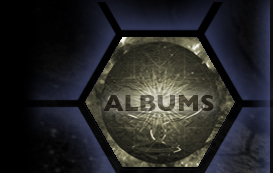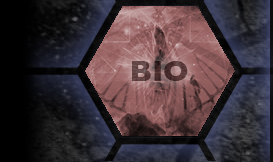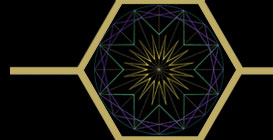 |
Track 2: The Psywrens' Call
When I first heard psychedelic trance, I immediately had two thoughts: that this music was very powerful and very scary. There was a beauty there that was absolutely compelling, yet there was a sense of something fundamentally dark, even ominous, that pervaded the music. I have to admit I was skeptical. But something about the power of the music, its sensual textures of shifting noises, kept drawing me back in, as did the amazing people I was meeting through the scene. And then, one long electric night, I got it. Something in my brain finally snapped and I found myself experiencing the trance that I had watched other people in.
Over the many hours that I danced that night, I experienced pieces of my ego, ideas and patterns and attachments and projections, dissolving as the relentless beat pulverized them into nothingness. And at the end of the night, as the sun rose gloriously over the forest where we were dancing, I felt an incredible sense of lightness and joy.
The Psywrens' Call is about that seductive power of trance. Like the Sirens of Greek mythology, the consciousness of trance seduces and lures the traveler onto its shores, where the ego is smashed upon the rocks of transformation.
The voices of the psywrens were provided by some of the powerful and inspiring women in my life who have taken the journey into the realm of trance many times, including Melanie McNeil, Emily Breckheimer, Ilsa Ananda, Melissa Morrissey, and Althea. Elizabeth Terry played the violin parts.
Ilsa, who provided the poetry at the end of the piece, was inspired by a vision of the psywrens' voices being joined by the screams of those drowning, which sound beautiful and melodious from a distance.
There is, no doubt, destruction in the karmic process that one enters in trance. The old must die to make way for the new. The ego must be sacrificed on the altar of true self. Sat Nam.
Perhaps that is why the alluring voices of the psywrens sounded so frightening to me at first. The ego fears nothing as much as it's own immolation.
"On the brink of destruction,
we shout out a warning to those who follow in our path
We drown and our shouted warning
becomes the breath of the psywrens' song.
Surrender." |
|
 |
Track 7: In Waves She Calls Me Home (For Ilsa Ananda)
This piece was written for and inspired by Ilsa Ananda Door, who was my partner, lover, and best friend for seven years. Throughout that time, we went through many challenges both together and alone. And yet her love and her fundamental goodness continued to call me home — into the eternal oneness at the center of our being. Today, the love and friendship that we built endures, even after our romantic relationship has ended.
But the song has another meaning, one that transcends the personal. If Ilsa has been one of the embodiments of the Goddess to me, it is the transcendent nature of that divinity that reminds me that, no matter what the circumstances, the Beloved will always be there. The Goddess is eternal, ever-present and alive in each of us.
I am honored to have collaborated on the creation of this piece with a great artist and follower of the Goddess, Marston Blow. Marston is a ceramic artist who crafts, among other things, beautiful ceramic singing bowls that can be played like the traditional metal bowls used by Tibetan monks. For this piece, I recorded her playing about a dozen bowls with different pitches. I then tuned each recording and brought them into a digital sampler that I can play with a keyboard controller. These sounds made up the foundation of the piece.
John Mulholland played the drums on this track and Elizabeth Terry and Michael D'Elia played the violins.
The violin melody, as well as the words at the end are from a song I wrote for Ilsa when we got married.
They are the first words I've ever sung on a Logos album.
"And all the world's wonders are
but shadows in the light"
|
|
 |
Track 8: Dance of Eros
This track has gone through more revisions and transformations than any other piece I've written, and is the most truly collaborative piece on the ablum. It initially was written in 2001 as a collaboration between myself and Liam Niblack, a percussionist and Middle Eastern musician. I created beats and some keyboard parts and he laid down several percussion, voice, and dijeradoo tracks. The track was used as part of an erotic blacklight performance piece by the Surreal Sirkus, a troupe Liam and I both participated in for several years.
Then, in 2004, piece was revamped for another show. We added oud, piano, and synthesized bass. My creative partner Ilsa Ananda danced as the embodiment of Eros to it, and thus the name was born.
For the album, however, I knew something was still missing. The piece was already very full, but never quite hit the dynamic range I was hoping to achieve. It needed to be striped down to basics, and to me that meant the drum. There is no more fundamentally erotic sound than a raw drum, in my mind; the pulse of beat and silence is the musical embodiment of the duality inherent in sex.
So I brought in John Mulholland, a master drummer and percussionist whose playing graces much of the album. He laid down a series of rhythmic tracks that build into a crescendo. My friend Sandy Newes, a clinical psychologist and skillful jaw harp player, added some nice twangy color to the build. Sami 'Te, a very talented belly dancer and percussionist, added the zills. And thus, from a highly collaborative process, a lush and intricate web of sound was woven.
The drone at the beginning still needed something, though. I had been looking for somewhere to put the sound of bees, which had been a consistent theme throughout the album's development. Suddenly, I realized that this was the perfect place for them. In their role as pollinators, bees are very much connected with the erotic impulse. |
| |
|
|
 |
Track 10: The Tower
This piece was actually started several years ago as a project for an electronic composition class I was taking at the University of North Carolina at Asheville. For the final project, each student was required to write a piece of music, which I was then responsible for compiling into a soundtrack for the 1927 silent science fiction film Metropolis. At the end of the class, a public performance was held in which the movie was shown with the new musical accompaniment. The project was dubbed Electropolis.
Metropolis is an early masterpiece of cinematography that depicts a distopian world in which the bulk of humanity has been enslaved to operate the machinery that enables a small group of elites to live in utter luxury. Complete with sexy female robots, biblical allegories, and not-so-subtle social commentary, the film established many of the templates for later science fiction and future-gone-wrong films.
Egoist that I am, I chose my own composition, "The Tower" to accompany the film's dramatic climax, in which a mob of angry workers destroy the machinery that keeps the city running, sealing their own fate in the process.
Of course, archetypally, The Tower represents the destruction that ensues when humans fall prey to the sin of hubris. Often that destruction comes as a flash out of the blue, as in the lightning bolt that destroys the tower of the traditional Tarot card. Culturally, the toppling of the World Trade Center towers stands as the most compelling symbol of The Tower in our age. This track draws upon all of these concepts and images. |
|
 |
Track 11: Symbignosis
This piece is a microcosm of the whole album and its themes of integration of opposites. After an opening interlude (to cleanse the sonic palate after the epic climax of The Tower), the piece has essentially three movements. The first is entirely played on synthesized instruments. The second movement is played on an acoustic piano. And the third ties the two together by integrating electronic and acoustic performances, closing with the original musical instrument, the human voice. |
|
 |
|
| |
| |
| |
| |
| |
| |
| |
| |
| |
| |
| |
|















